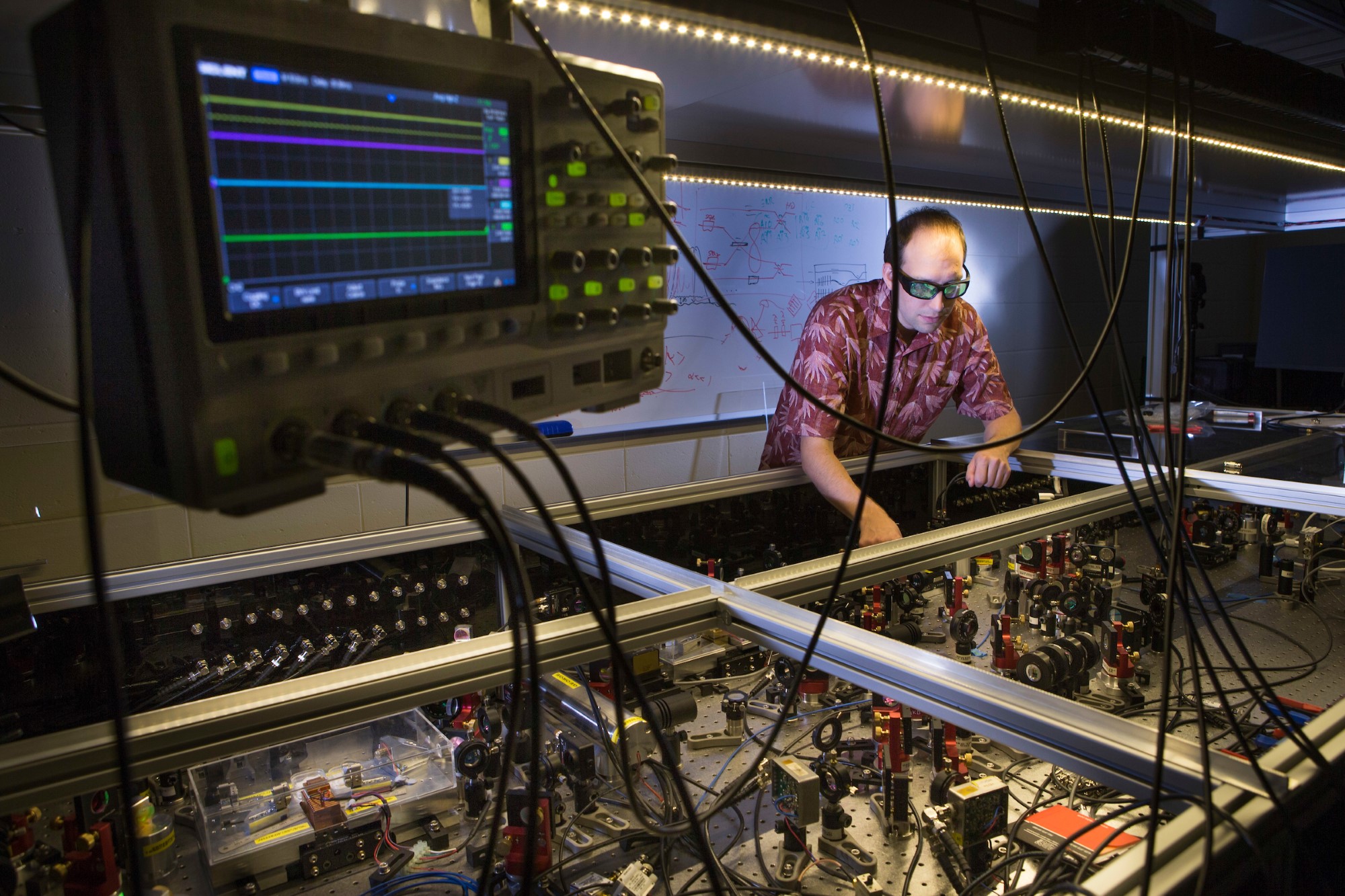
Research projects
Discover the forefront of astronomy and astrophysics through our projects, ranging from deep-space communication systems to groundbreaking adaptive optics. Explore our diverse, ongoing research initiatives shaping the future of space science.
Displaying 76 - 90 of 94 project(s).
M dwarfs are the most abundant stars in the universe, and prime targets for detecting Earth-like planets.
Theme
- Galactic archaeology
- Stellar and planetary astronomy
This research project employed the Wide-Field Spectrograph (WiFeS) to study the extended filaments surrounding a sample of brightest cluster galaxies (BCGs) in massive clusters. Integral-field spectroscopy provides the opportunity to measure the distribution, emission properties, and velocities of the emitting gas across the extent of the galaxies.
Theme
- Black hole phenomena
- Structure and evolution of the Cosmos
We are looking for ambitious students keen to join the project. They can be involved in different aspects, both observational and theoretical/computational
Theme
- Galactic archaeology
- Stellar and planetary astronomy
The ISM of spiral galaxies is a dynamic environment consisting of thermal gas, relativistic particles, magnetic fields, and dust. The project aims to decipher the origin of filamentary structures in the ISM using numerical simulations as well as observational data.
Theme
- Structure and evolution of the Cosmos
This project delves deep into understanding how stars create elements, contributing to unraveling the mysteries surrounding the origins of elements by extracting and tracing the element compositions of millions of stars using cutting-edge spectroscopic surveys.
Theme
- Galactic archaeology
- Structure and evolution of the Cosmos
In this project, you will lead development of a key sub system (optical, mechanical, computational) to enable novel ultra-high resolution, visible light instrument Pyxis: a prototype for an astrophysical space interferometer.
Theme
- Instrumentation
- Stellar and planetary astronomy
Student intake
Open for Bachelor, Honours, PhD students
People
- Associate Professor Tony Travouillon, Supervisor
- Professor Michael Ireland, Supervisor
In this project, you will lead development of a key sub system (optical, mechanical, computational) to enable novel ultra-high resolution, visible light instrument Pyxis: a prototype for an astrophysical space interferometer.
Theme
- Instrumentation
- Stellar and planetary astronomy
Student intake
Open for Bachelor, Honours, PhD students
People
- Associate Professor Tony Travouillon, Supervisor
- Professor Michael Ireland, Supervisor
Supermassive black holes in the early Universe are more massive than we can presently explain. We aim to construct their demographics and reveal their origin.
Theme
- Black hole phenomena
- Structure and evolution of the Cosmos
Student intake
Open for Honours, PhD students
Observatory
People
- Associate Professor Christian Wolf, Supervisor
The student will work with Prof. Krumholz to design and run simulations using the enzo adaptive mesh refinement code.
Theme
- Stellar and planetary astronomy
- Structure and evolution of the Cosmos
The student will model the gamma-ray emission around the Milky Way's central bubble.
Theme
- Galactic archaeology
By mapping the motions of many galaxies, this project aims to precisely measure the amount and distribution of both visible and dark matter and test Einstein’s theory of gravity.
Theme
- Structure and evolution of the Cosmos
By mapping the motions of many galaxies, this project aims to precisely measure the amount and distribution of both visible and dark matter and test Einstein’s theory of gravity.
Theme
- Structure and evolution of the Cosmos
The focus of this PhD research is the study of the early evolution of life using abundances of chemical elements in different life forms and their environments, at different temporal and spatial scales.
Theme
- Stellar and planetary astronomy
The goal of this project is to use new, high-resolution simulations to understand how key physical processes, like stellar feedback and gravitational instabilities, shape disk galaxies (from 11 Gyr ago to today).
Theme
- Structure and evolution of the Cosmos
Student intake
Open for Honours, Master, PhD students
Observatory
People
- Associate Professor Emily Wisnioski, Collaborator
In this project you will use a new cosmic ray propagation code, CRIPTIC, to model the injection, transport, and final annihilation of positrons in the interstellar medium of the inner Galaxy.
Theme
- Black hole phenomena
- Galactic archaeology
- Structure and evolution of the Cosmos
Student intake
Open for Honours, PhD students
People
- Dr Roland Crocker, Supervisor
- Professor Mark Krumholz, Supervisor
